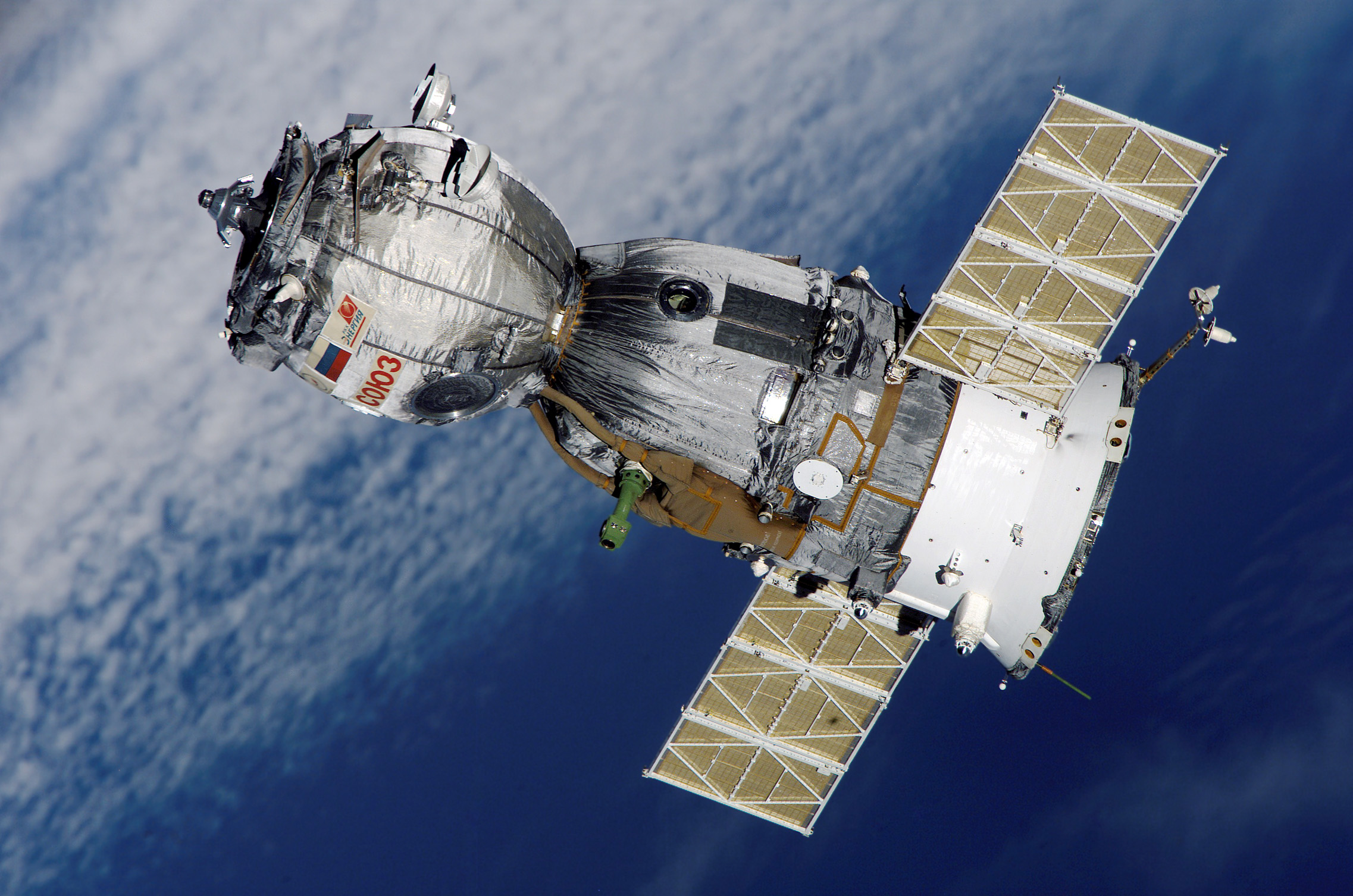

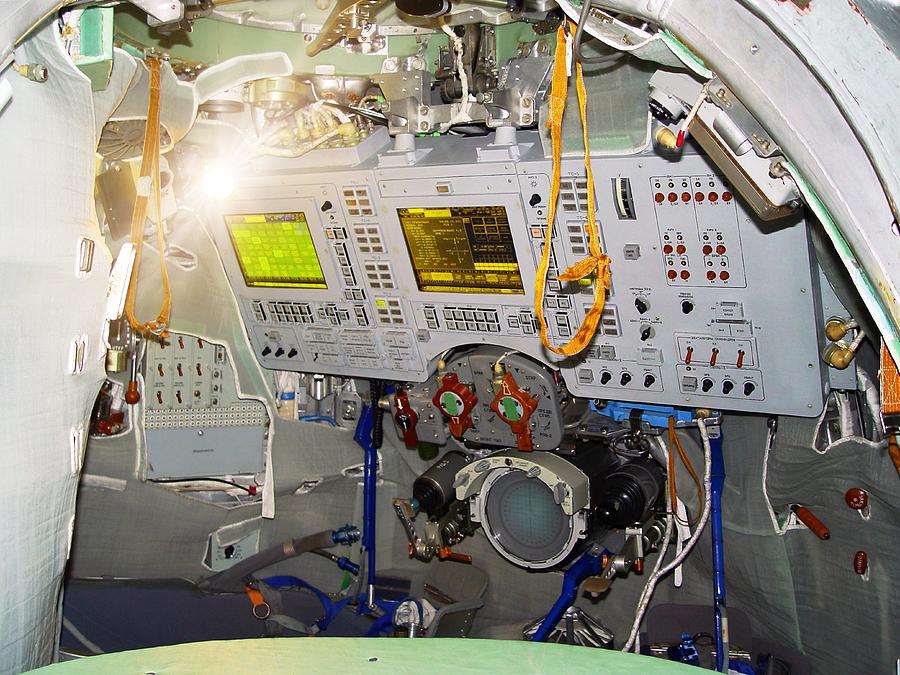


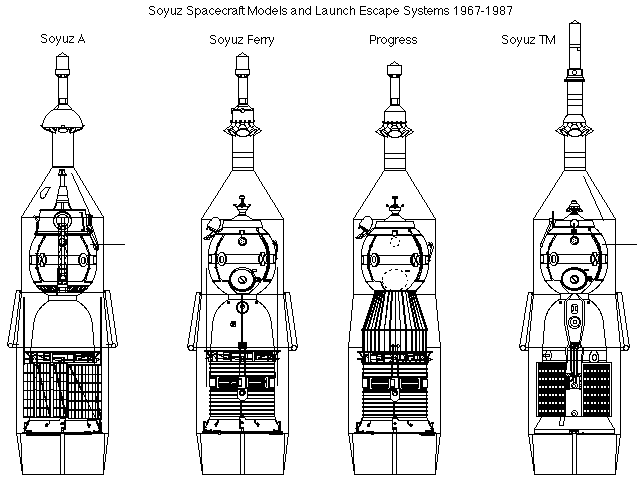

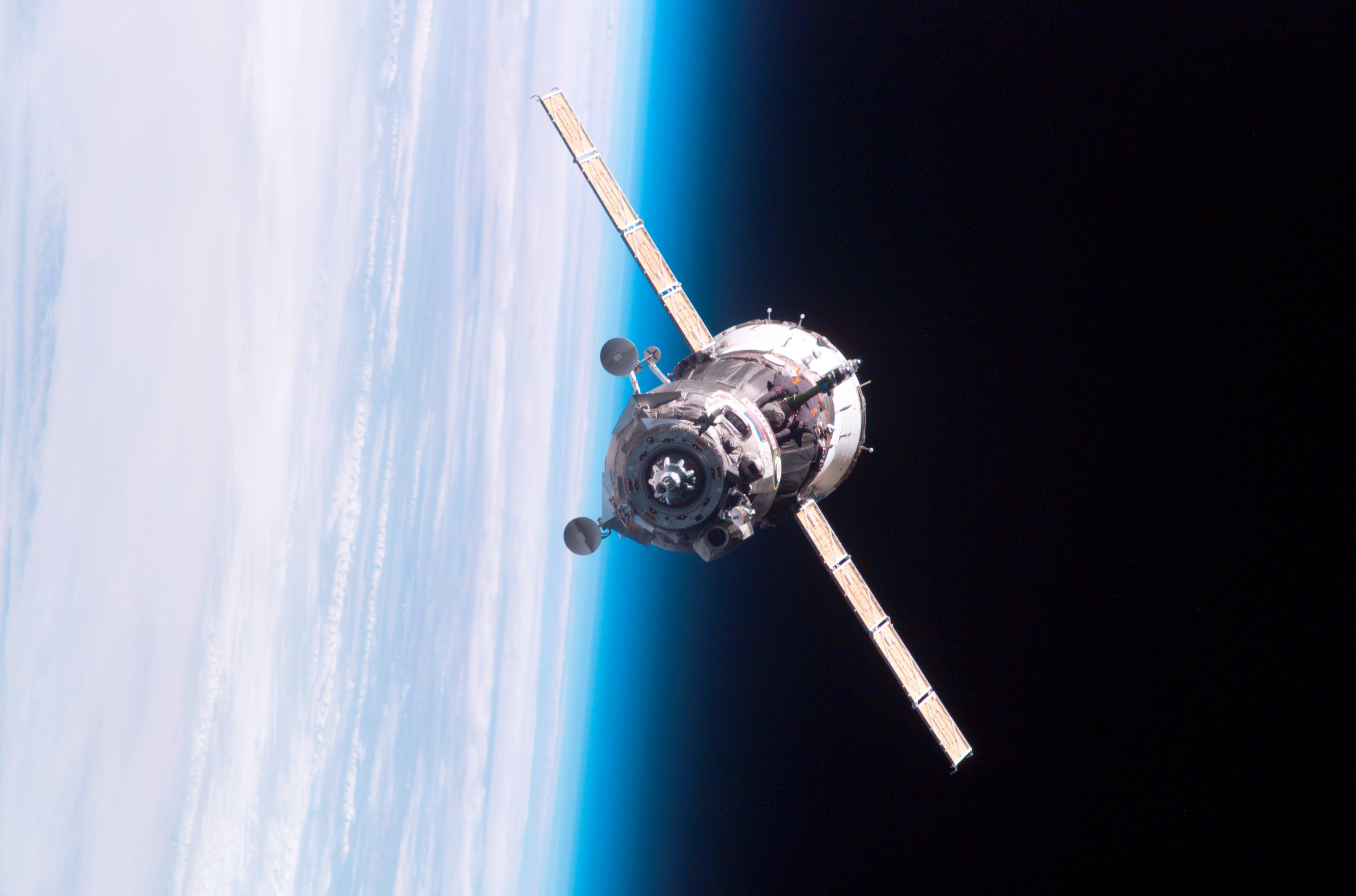
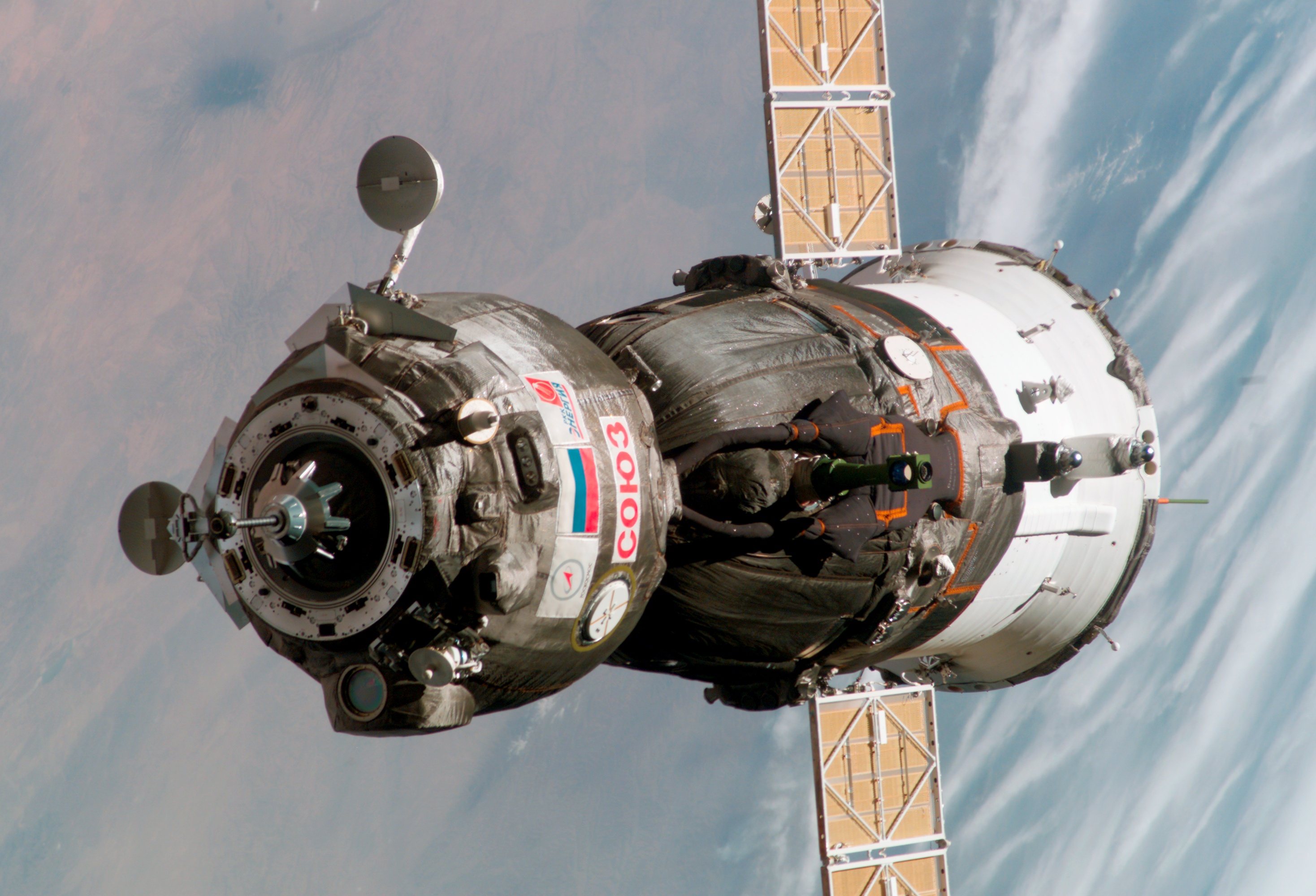
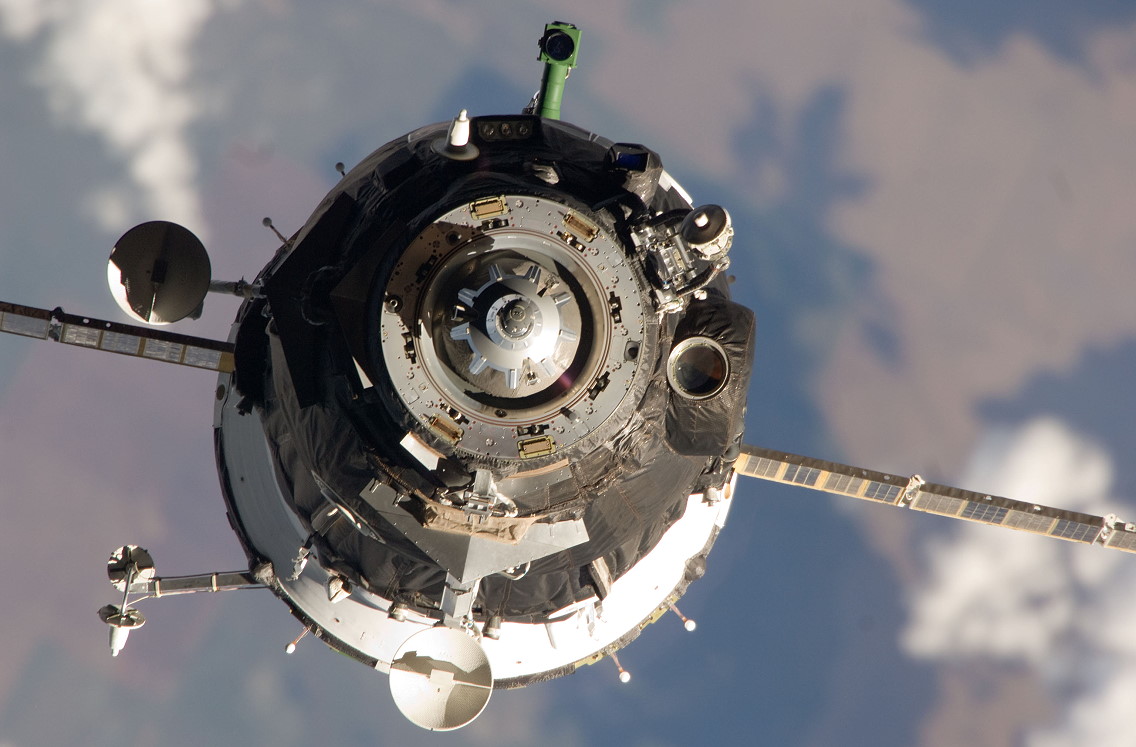
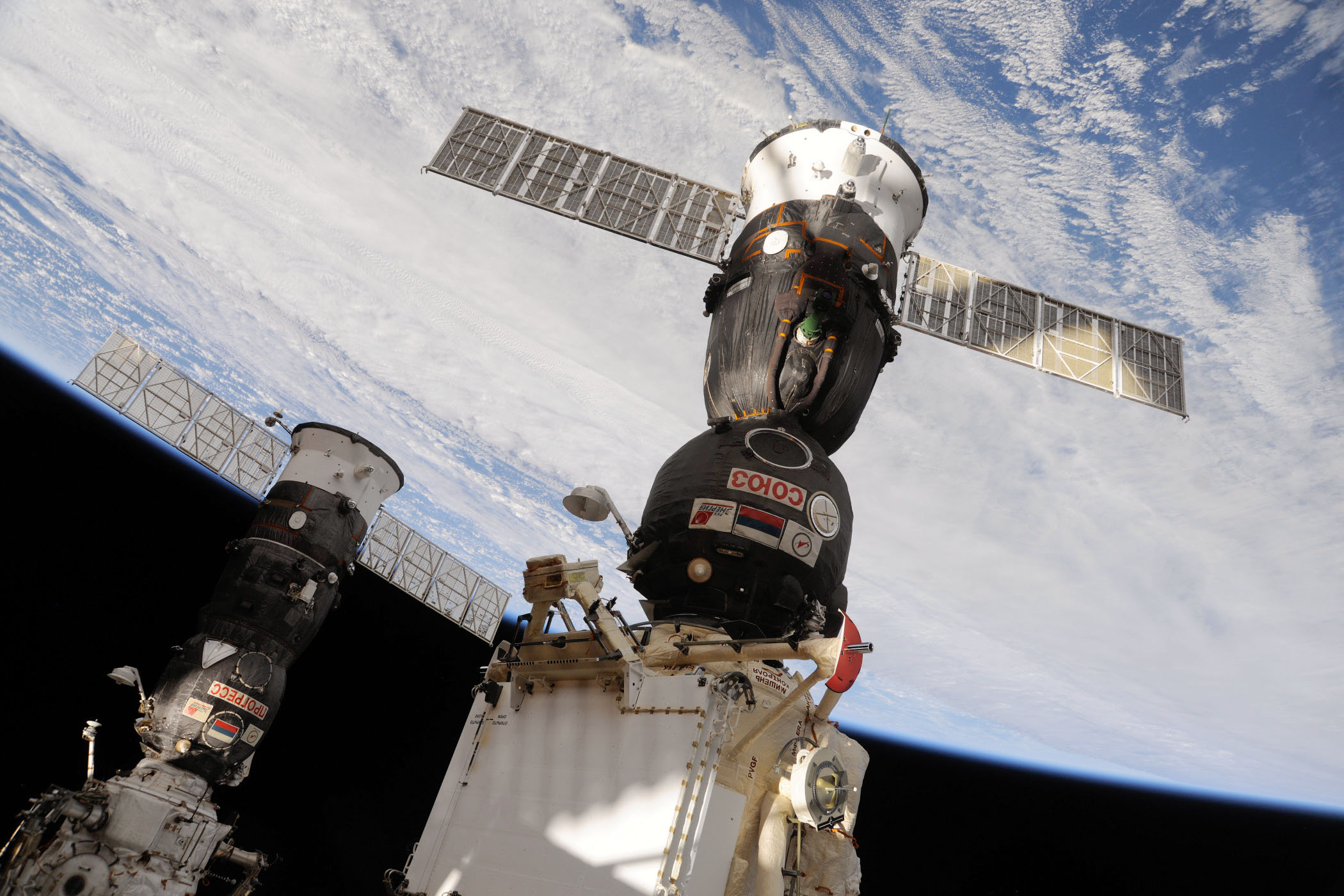
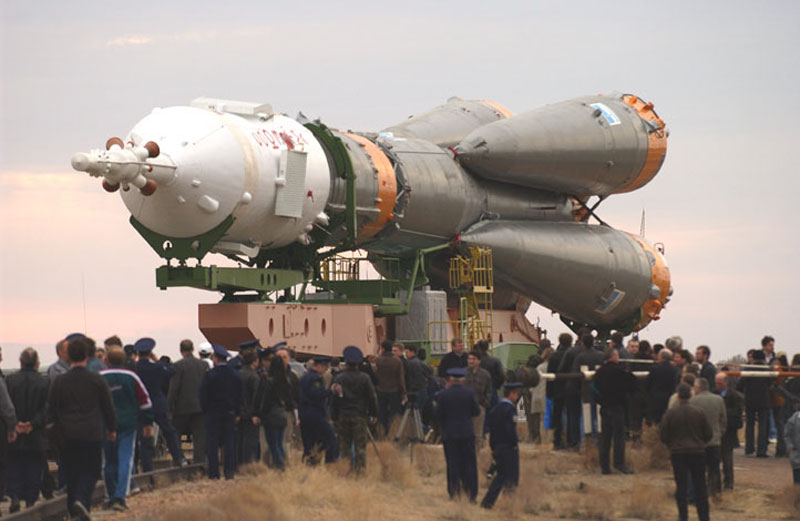


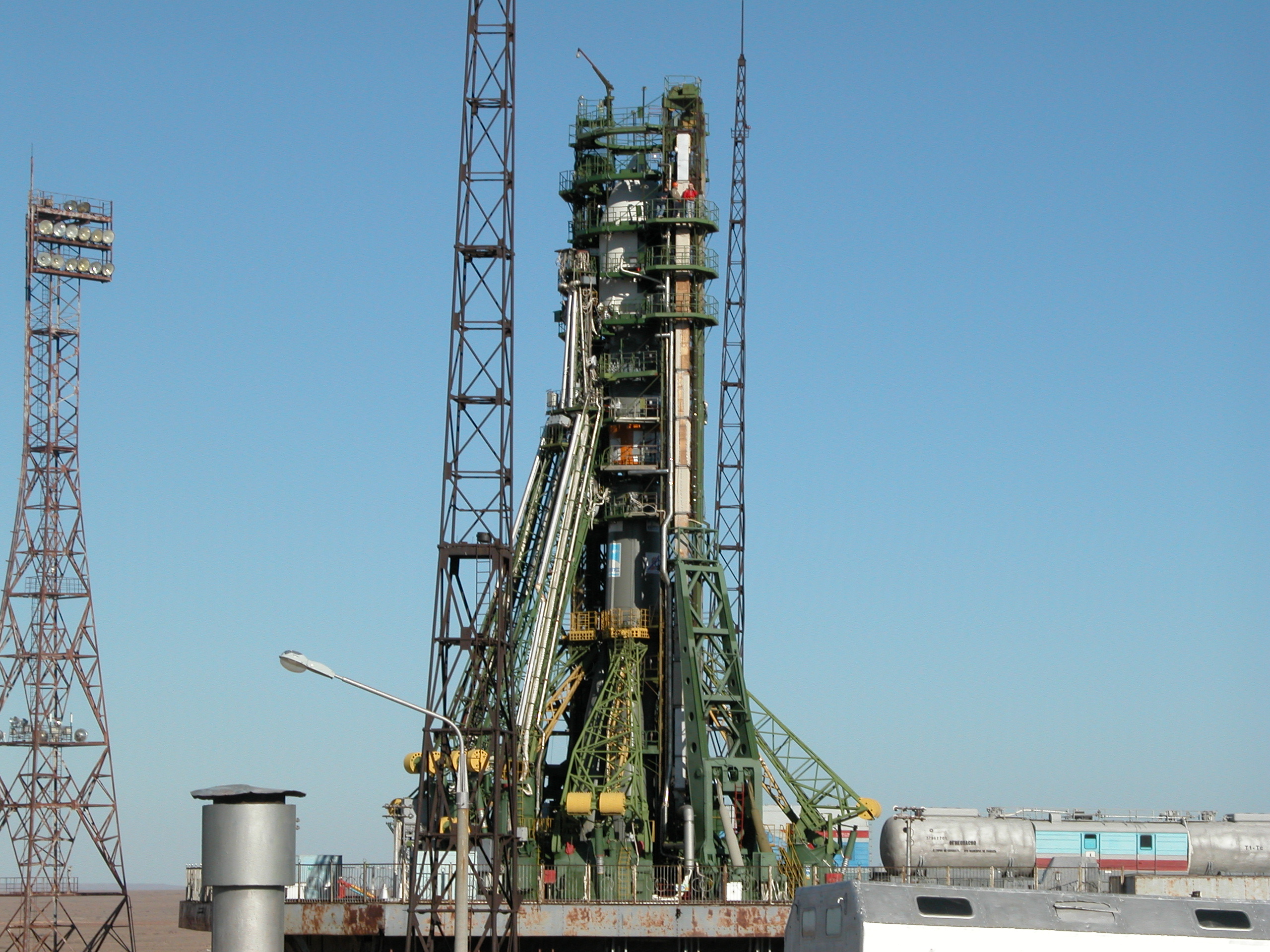


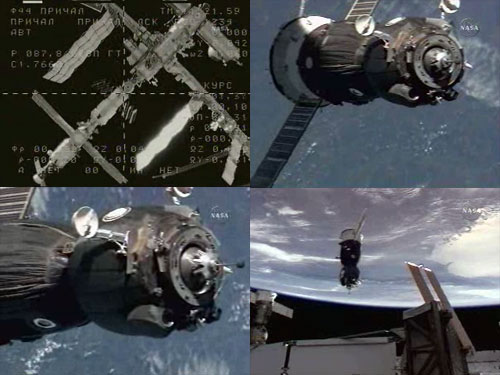
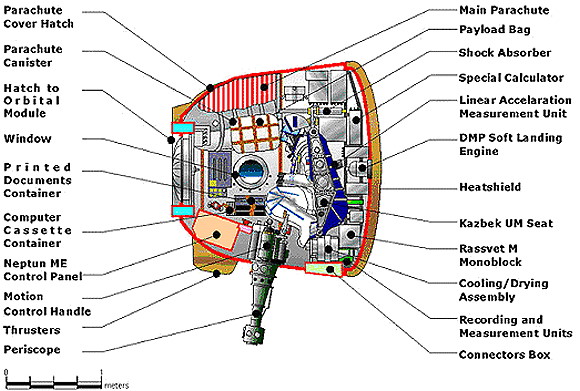





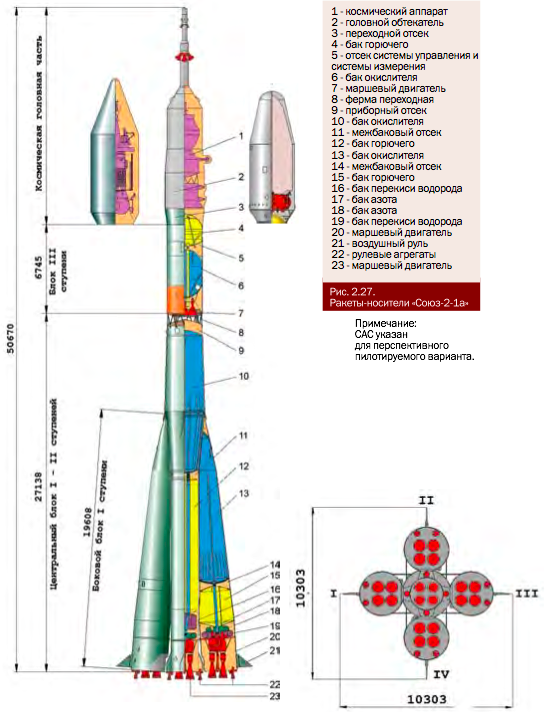

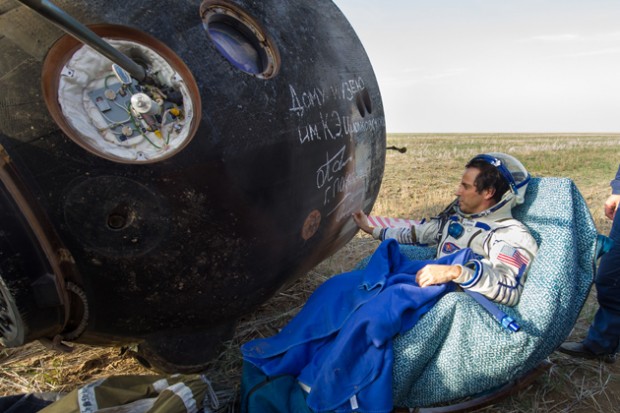
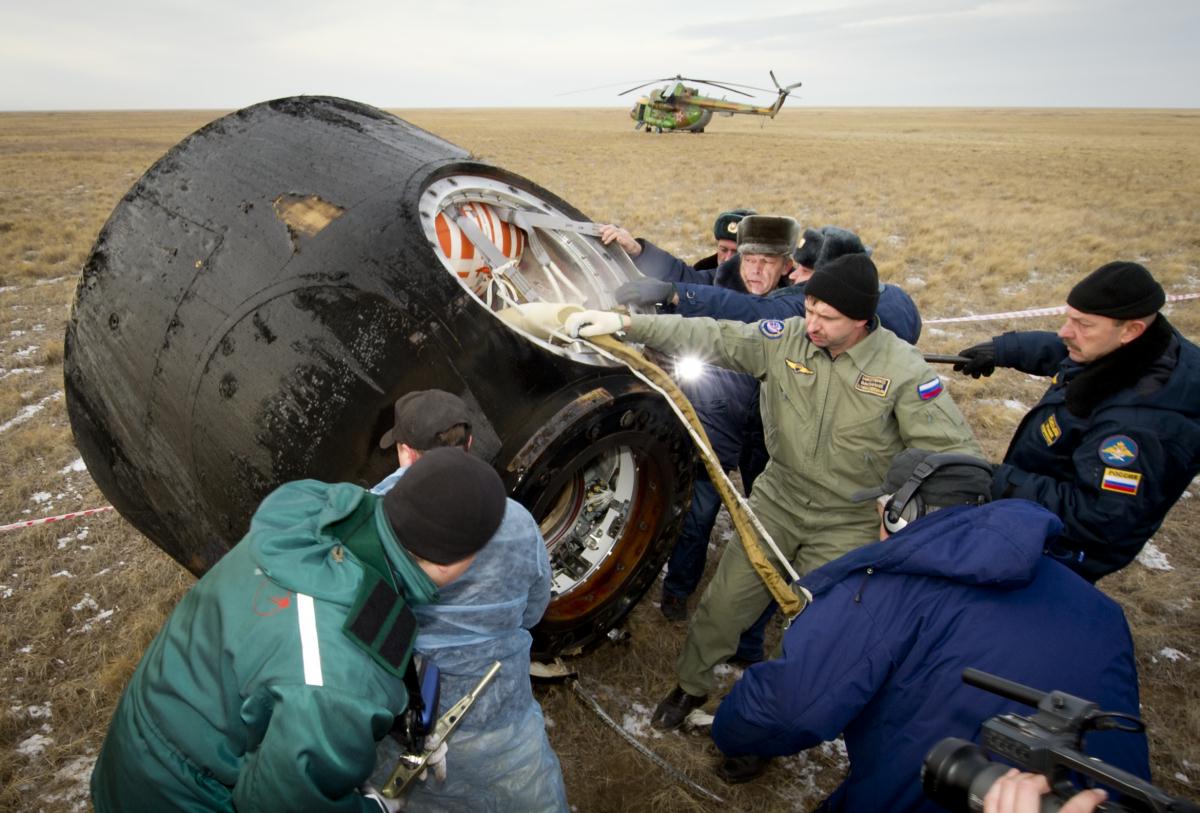
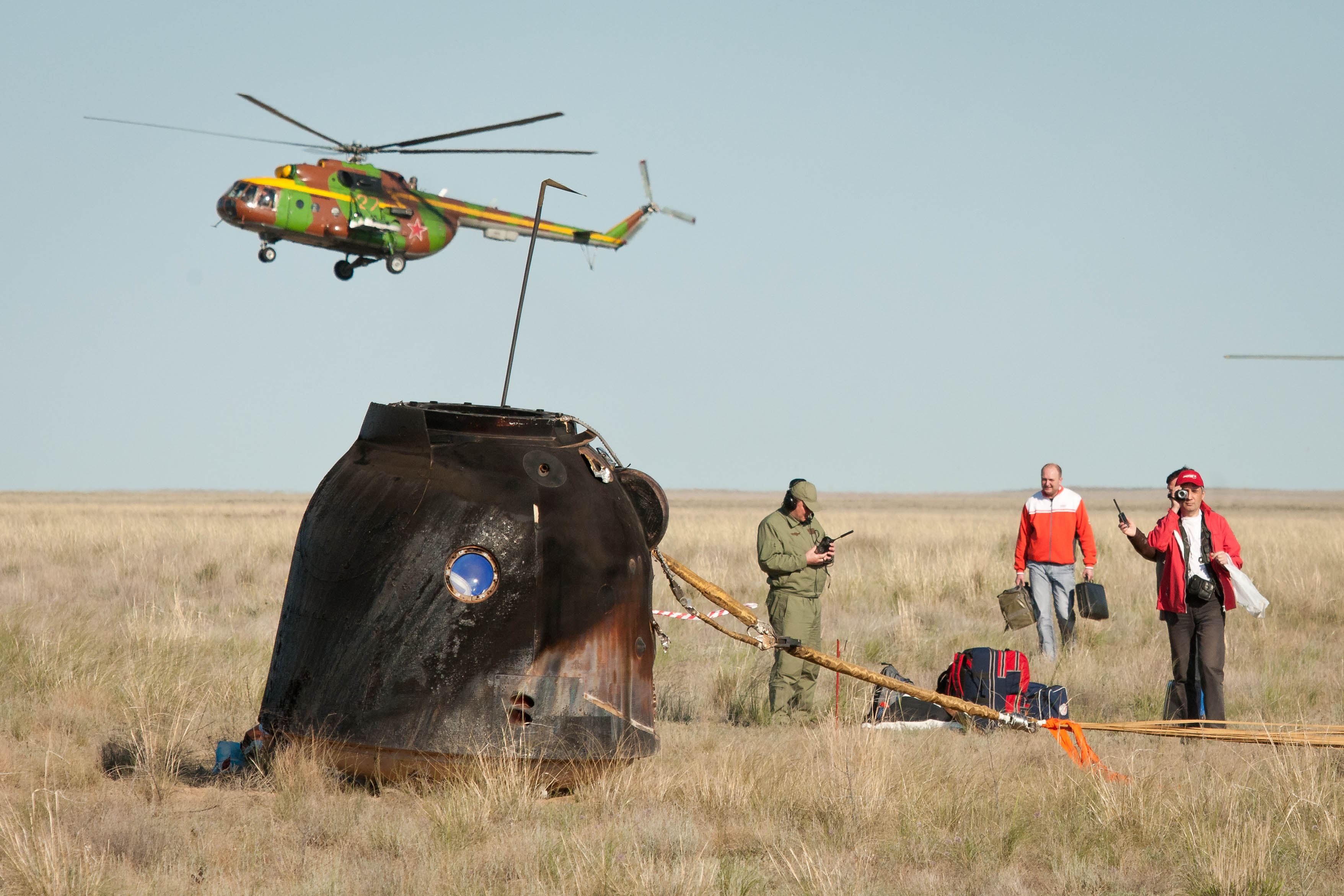



Soyuz programme
From Wikipedia, the free encyclopedia
The programme consists of the Soyuz spacecraft and the Soyuz rocket and is now the responsibility of the Russian Federal Space Agency.
Contents
Soyuz rocket
Main article: Soyuz (rocket family)
The launch vehicles used in the Soyuz expendable launch system are manufactured at the Progress State Research and Production Rocket Space Center (TsSKB-Progress) in Samara, Russia.
As well as being used in the Soyuz programme as the launcher for the
manned Soyuz spacecraft, Soyuz launch vehicles are now also used to
launch unmanned Progress supply spacecraft to the International Space Station and commercial launches marketed and operated by TsSKB-Progress and the Starsem company. There were 11 Soyuz launches in 2001 and 9 in 2002. Currently Soyuz vehicles are launched from the Baikonur Cosmodrome in Kazakhstan and the Plesetsk Cosmodrome in northwest Russia and, starting in 2011, Soyuz launch vehicles can now also be launched from the Guiana Space Centre in French Guiana.[1] The Spaceport’s new Soyuz launch site has been handling Soyuz launches since 21 October 2011, the date of the first launch.[2] As of December 2013, 6 Soyuz launches had been made from French Guiana, all successful.Soyuz spacecraft
Main article: Soyuz spacecraft
The basic Soyuz spacecraft
design was the basis for many projects, many of which never came to
light. Its earliest form was intended to travel to the moon without
employing a huge booster like the Saturn V or the Soviet N-1
by repeatedly docking with upper stages that had been put in orbit
using the same rocket as the Soyuz. This and the initial civilian
designs were done under the Soviet Chief Designer Sergei Pavlovich Korolev,
who did not live to see the craft take flight. Several military
derivatives took precedence in the Soviet design process, though they
never came to pass.A Soyuz spacecraft consists of three parts (from front to back):
- a spheroid orbital module
- a small aerodynamic reentry module
- a cylindrical service module with solar panels attached
- Soyuz-A 7K-9K-11K circumlunar complex proposal (1963)
- Soyuz 7K-OK (1967–1970)
- Soyuz 7K-L1 Zond (1967–1970)
- Soyuz 7K-L3 LOK (1971–1972)
- Soyuz 7K-OKS (1971)
- Soyuz 7KT-OK (1971)
- Soyuz 7K-T or "ferry" (1973–1981)
- Soyuz 7K-T/A9 (1974–1978)
- 7K-MF6 (1976)
- Soyuz 7K-TM (1974–1976)
- Soyuz-T (1976–1986)
- Soyuz-TM (1986–2003)
- Soyuz-TMA (2003–2012)
- Soyuz-TMA-M (2010/....)
- Soyuz-ACTS (2014/....)
- Military Soyuz (P, PPK, R, 7K-VI Zvezda, and OIS)
- Soyuz P manned satellite interceptor proposal (1962)
- Soyuz R command-reconnaissance spacecraft proposal (1962)
- Soyuz 7K-TK (1966)
- Soyuz PPK revised version of Soyuz P (1964)
- Soyuz 7K-VI Zvezda space station proposal (1964)
- Soyuz OIS (1967)
- Soyuz OB-VI space station proposal (1967)
- Soyuz 7K-S military transport proposal (1974)
- Soyuz 7K-ST concept for Soyuz T and TM (1974)
Derivatives
The Zond spacecraft was another derivative, designed to take a crew traveling in a figure-eight orbit around the Earth and the moon but never achieving the degree of safety or political need to be used for such.Finally, the Progress series of unmanned cargo ships for the Salyut and Mir space laboratories used the automatic navigation and docking mechanism (but not the re-entry capsule) of Soyuz.
As of 2011, Soyuz derivatives provide much of mankind's human spaceflight capability and are used to ferry personnel and supplies to and from the International Space Station. Following the retirement of the USA's Space Shuttles, Russia has the sole proven system for boosting crew to the station.
While not a direct derivative, the Chinese Shenzhou spacecraft follows the basic template originally pioneered by Soyuz.[3][4]


No comments:
Post a Comment